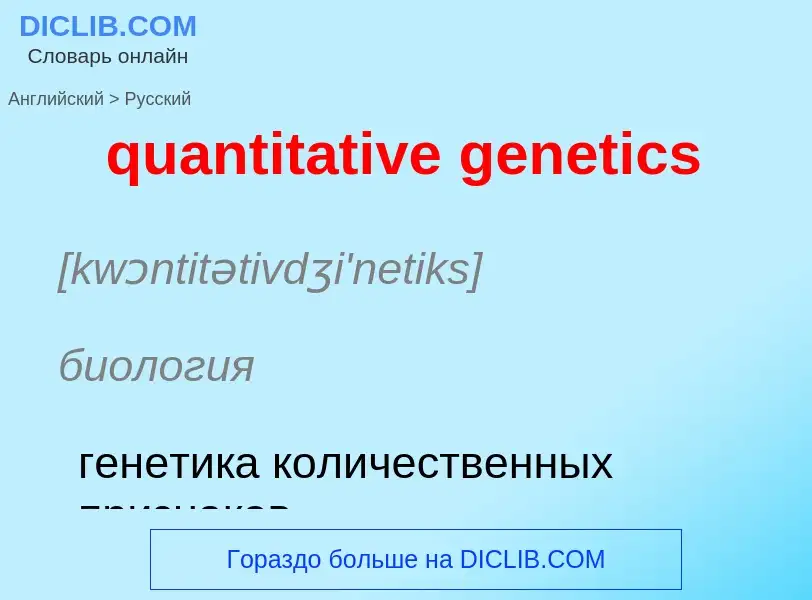Tradução e análise de palavras por inteligência artificial ChatGPT
Nesta página você pode obter uma análise detalhada de uma palavra ou frase, produzida usando a melhor tecnologia de inteligência artificial até o momento:
- como a palavra é usada
- frequência de uso
- é usado com mais frequência na fala oral ou escrita
- opções de tradução de palavras
- exemplos de uso (várias frases com tradução)
- etimologia
quantitative genetics - tradução para russo
[kwɔntitətivdʒi'netiks]
биология
генетика количественных признаков
общая лексика
полигенная наследственность
общая лексика
полигенный признак
Definição
Wikipédia
Quantitative genetics deals with quantitative traits, which are phenotypes that vary continuously (such as height or mass)—as opposed to discretely identifiable phenotypes and gene-products (such as eye-colour, or the presence of a particular biochemical).
Both branches use the frequencies of different alleles of a gene in breeding populations (gamodemes), and combine them with concepts from simple Mendelian inheritance to analyze inheritance patterns across generations and descendant lines. While population genetics can focus on particular genes and their subsequent metabolic products, quantitative genetics focuses more on the outward phenotypes, and makes only summaries of the underlying genetics.
Due to the continuous distribution of phenotypic values, quantitative genetics must employ many other statistical methods (such as the effect size, the mean and the variance) to link phenotypes (attributes) to genotypes. Some phenotypes may be analyzed either as discrete categories or as continuous phenotypes, depending on the definition of cut-off points, or on the metric used to quantify them.: 27–69 Mendel himself had to discuss this matter in his famous paper, especially with respect to his peas attribute tall/dwarf, which actually was "length of stem". Analysis of quantitative trait loci, or QTL, is a more recent addition to quantitative genetics, linking it more directly to molecular genetics.
































![A QTL for [[osteoporosis]] on the human chromosome 20 A QTL for [[osteoporosis]] on the human chromosome 20](https://commons.wikimedia.org/wiki/Special:FilePath/Example of QTL-Scan on a single Chromosom from PLoS Biology.jpg?width=200)
![Example of a genome-wide scan for QTL of [[osteoporosis]] Example of a genome-wide scan for QTL of [[osteoporosis]]](https://commons.wikimedia.org/wiki/Special:FilePath/Example of a Genome-wide QTL-Scan from PLoS Biology.jpg?width=200)
